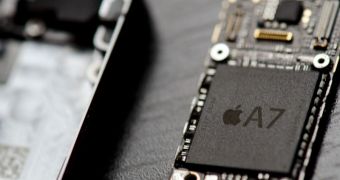Tests carried out on two iPhone 5s units whose Home buttons had been swapped have revealed that Apple pairs each phone’s fingerprint sensor to the A7 chip at the heart of the device. It’s an ingenious move on behalf of the Cupertino behemoth, according to one security expert.
It’s also a move which, for one reason or another, Apple preferred to keep a secret during the September 10 keynote presentation when the company lifted the cloth off its most advanced iPhone yet.
As uncovered by iMore, a unique key embedded deep inside each iPhone’s hardware permits only one Touch ID sensor to work with one A7 chip.
If you swap the buttons between two phones, fingerprint recognition no longer works. iOS 7 also displays an error when the user attempts to register a print.
So why did Apple do it? In a nutshell, to enhance the security of the iPhone 5s. Security expert Nick Arnott explains it best:
“By pairing the A7 chip to a specific Touch ID, this could make it more difficult for tinkerers to try and intercept communications to reverse engineer how the components talk to each other.”
“This could also mitigate possible risks of malicious third-party Touch IDs being installed in a user's device without their knowledge which could capture a user's fingerprint for an attacker, while passing it on to the A7 chip to allow a user to continue to use their device as normal, without any indication it has been tampered with.”
There could be other reasons too, such as thwarting Chinese knockoffs. But one thing that still remains unanswered is why Apple wanted to keep this a secret. After all, why pass on the opportunity to tick another checkbox on the “Security” keynote slide?

 14 DAY TRIAL //
14 DAY TRIAL //